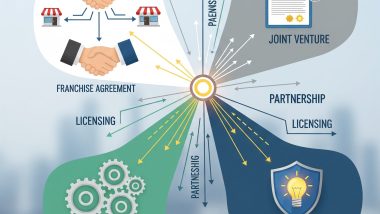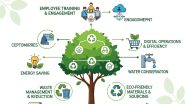If you ask any small business owner or entrepreneur to name their foremost hardest challenges that don`t let them sleep in the night, they will say without a second thought- money!
Paying off debts, growing business, increasing profitability, and achieving financial freedom are a few challenges that SMEs and MSMEs often face. This was true before the pandemic, but after it, it has become even more crucial for entrepreneurs to overcome money challenges.
According to a survey published in Forbes, “95% of businesses surveyed said the pandemic had affected their bottom line, and 53% estimated that 2020 revenue would drop by more than a quarter.”
Even the best business coaches often come across questions like ‘how to get my business out of debt’ or ‘how can I repay my loan as soon as possible’ by small business owners.
Most entrepreneurs begin their start-up by arranging funds through debt funding, equity funding, loans, or through other less formal sources like friends & family. But the experience of being in debt can be scary as well as overwhelming.
If managed smartly, borrowing funds can help you accomplish your goals. On the other hand, mismanaged business debts can not only affect your financial wellbeing but can also cause mental stress, especially to small business owners that are worse affected due to the Covid-19 pandemic.
There are many government schemes to help small business owners with loans. The Indian government had offered relief to MSMEs in the form of subordinated debts, collateral-free loans, and equity infusion through its Fund of Funds (FoF) scheme in 2020. This scheme proposes to purchase up to 15% growth capital in high-credit MSMEs.
You can watch this video by Dr. Vivek Bindra on "How to Pay Off Your Loans":
If you have a well-thought financial plan, you can solve the cumbersome process of taking your business out of debt, just like others. Here is how you can chart your way out of debt:
1. Manage Your Debts
The first step that will take you closer to managing your debt is to organize all the details of exactly what you owe. Make a list of your debts with EMIs, interest rates, and tenures. This will help you recognize the costliest debts.
2. Settle Costliest Debts First
After sorting out your debts, pick the costliest one! Costly debts, if not paid on time, will extract the highest interest. This can drain your finances. Hence, settle your costliest debts on a priority basis.
3. Plan Monthly Budget
One of the most vital debt management techniques is to plan your monthly budget. Make a list of your income & expenses while deciding your monthly budget. This will give you a clear picture to think about ways to reduce your daily expenditure. Having details of monthly cash inflow and outflow can help you save money that you can use to clear your debt.
4. Consolidate Loans
Sometimes keeping a track of all the loans can be difficult. If you have too many loans, consolidating them into one can be a good idea. This will leave you with just one EMI. Business loans, personal loans, and credit cards provide you with this option. It will remove various debts and leave you with just one loan to track.
5. Insure Against Economic Shocks
The future is uncertain and it is wise to protect yourself from uncertainties that you might be exposed to. E.g. a loss of a job could lead to delayed EMIs. So, to avoid such situations, create an emergency fund to help you sustain yourself during a bad phase. Ideally, this fund should be 3-6 times more than your current monthly income.
Repaying loans is a moral, legal, and also financial obligation. With smart and effective debt management strategies, you too can get your business out of debt. Learn how to manage your debt with the top-industry leaders from our Problem Solving Courses.
















